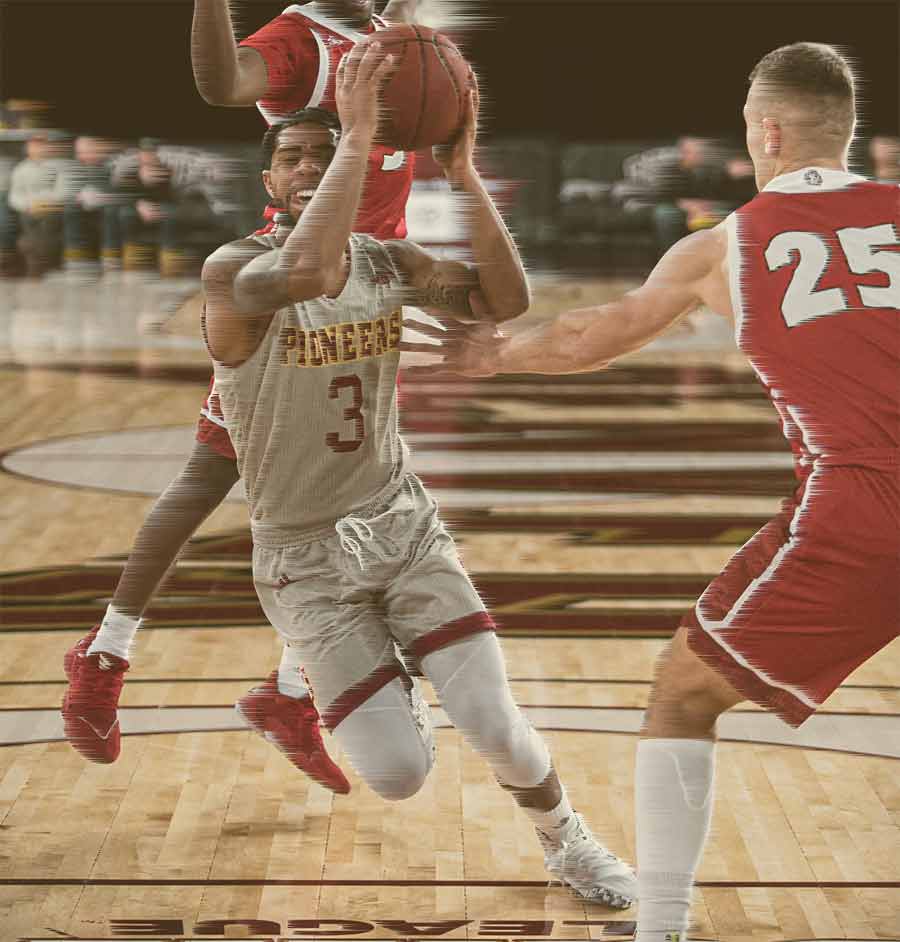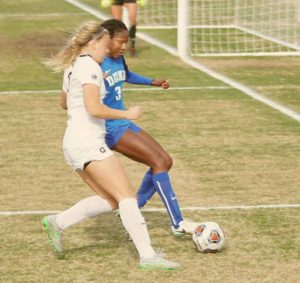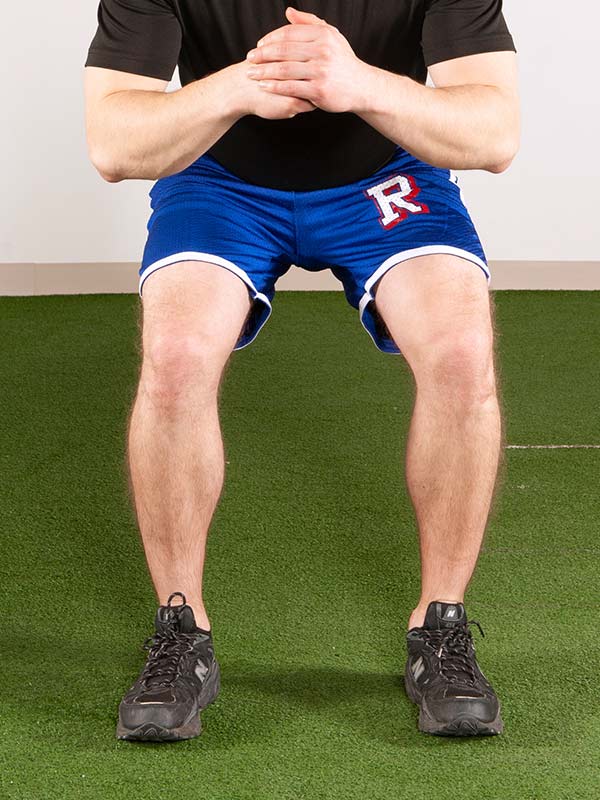With knowledge and training, you can reduce your chances of tearing your anterior cruciate ligament (ACL) or retearing a reconstructed ACL.
ACL injury prevention programs are recommended for everyone who participates in sports and activities with jumping and aggressive changes of direction, beginning as early as elementary school. Why? Because tearing your ACL is one of the most common and devastating sports injuries.
To return to a sport, a ruptured ACL needs to be surgically reconstructed followed by at least nine months of rehabilitation and training. Most people report achieving less than their full preinjury capabilities.
The recommendation: do what you can to prevent suffering an ACL tear.
ACL Injury Prevention Basics:
- Understand how ACL injuries happen.
- Get evaluated by a medical professional familiar with the anatomical and training deficiencies that increase your possibility of ACL injury.
- Strengthen and train to reduce your risk factors for your body, sport and position.
Information on this page was contributed by MOON Knee Group participant Dr. Robert Marx, orthopedic surgeon at the Hospital for Special Surgery in New York and professor of orthopedic surgery at Weill Medical College of Cornell University.
How ACL Injuries Happen
About 70 percent of ACL injuries occur without contact. In sports, the athlete is often landing from a jump, planting a foot, cutting sharply or coming to an abrupt stop.
These movements put the knee in an at-risk position: the foot remains planted and the knee twists inward. The medical term for this knock-kneed position is knee valgus. In this situation, the tibia (shinbone) can thrust forward off the femur (thighbone), tearing the ACL apart.
Noncontact ACL injuries occur at a wide range of athletic ability levels, from high school to professional athletes.

Cutting can result in ACL injuries. Here the player maintains good knee alignment between hip and toe with little inward bend.
Four Primary Risk Factors for Tearing Your ACL
There are four main risk factors for ACL tears:
1. Your Sport
Dynamic cutting, pivoting, jumping and tackling sports like soccer, basketball and football are the highest risks for ACL injury. Other sports such as handball, volleyball, gymnastics, skiing and tennis also place the knee at risk for ACL injury. Sports that present a much lower risk for ACL injury include swimming, golf, baseball and ice hockey.
2. Your Age
People between 15 and 25 years old sustain more ACL injuries. This is mostly because this population is more physically active. Despite the growing obesity problem in America and the rise of sedentary activities, adolescents are playing competitive sports at higher rates than ever before. Besides being more active in sports, children also tend to be more flexible than adults due to the higher elasticity of their ligaments, tendons and joints.
3. Your Sex

Two pieces of good news for women:
- Following ACL surgery on one knee, females have the same—NOT higher—risk as males to tear the ACL in the other knee.
- Following surgery, female and male athletes have the same retear risk of their reconstructed ACLs.
4. Prior ACL Reconstruction
If you’ve torn your ACL, you’re at a higher risk of tearing it again. You’re also at higher risk of tearing the ACL in your other knee. Patients who tear their ACL also have a higher risk of requiring more knee surgery and developing arthritis.
Land and Decelerate the Right Way
Even without contact, you can put enough force on an ACL to tear it. You can reduce your tear or retear risk by training to land and change direction with lower force. See the complete landing and deceleration discussion with images and video at How to Decelerate and Land to Prevent ACL Injuries.
ACL Injury Prevention
In every ACL tear, the tibia (shinbone) shifts forward from the femur (thighbone).
This forward shift happens regardless of the movement that causes the shift. Nonetheless, understanding the noncontact athletic movements that cause the tibia to move forward helps determine how to prevent ACL injuries.
These include:
- Deceleration
- Landing
- Cutting
- Pivoting
- Other aggressive changes of direction where the knee can bend or twist inward or bow out.
- Landing straight-legged is also risky.
ACL prevention programs focus on aligning knees over toes during these movements.
Proprioception
A key tenet of ACL tear prevention is proprioception. This is your natural spatial sense, your ability to sense the position of your core and extremities. Proprioception makes balance possible in dynamic situations when it is impossible to pay attention to other indicators.
If you’ve had an injury like an ACL tear, your body will need to relearn proprioception.
You can improve or relearn proprioception through sequential balance and movement exercises. For example, advancing over time from standing on one leg on a smooth floor to an uneven surface to a wobble board.
With repetition, neuromuscular patterns that control subtle and nuanced athletic movements can be enhanced or redeveloped.
Knee Over Toe

If you can train your body to keep your knee aligned above the toe when viewed from the front as you land, decelerate and change direction, the tibia is much less likely to slide forward off the femur to tear the ACL. This means not letting the knee bend outward or inward.
Knee over toes training improves awareness and knee control during standing, cutting, jumping and landing. Exercises can include transitioning between wobble-boards and the floor with balance mats.
Each group of exercises is designed to progress as proprioception (see below) and strength develop. By focusing on core stability, balance and neuromuscular control, prevention programs also help cut down on ankle and overuse injuries.
Strength, Balance and Plyometrics
Muscle weakness and poor balance can contribute to knee injuries. ACL prevention programs develop your strength, balance, and landing and deceleration techniques.
Some common exercises in these programs are in the sidebar (immediately below on mobile).
Note that if you are rehabbing following ACL surgery, do not begin these exercises until you have completed rehabilitation Phase 3. It is recommended that you do strength, balance and plyometric exercises with the guidance of your athletic trainer or physical therapist.
Sample ACL Injury Prevention Exercises
Strength
- Plank (push-ups)
- Level 1: Both legs
- Level 2: Alternate legs
- Level 3: One leg lift
- Side plank
- Level 1: Static
- Level 2: Dynamic
- Level 3: With leg lift
Balance
- Single-leg balance
- Level 1: Hold the ball
- Level 2: Throwing ball with partner
- Level 3: Test your partner
- Level 4: Throwing ball with partner on wobble-board
- Level 5: Test your partner on the wobble-board
Plyometrics
- Squats
- Level 1: With toe raise
- Level 2: Walking lunges
- Level 3: One-leg squats
- Level 4: Squats with toe raise on wobble-board
- Level 5: One-leg squats on wobble-board
Jumping
- Level 1: Vertical jumps
- Level 2: Lateral jumps
- Level 3: Box jumps
- Level 4: One-legged jumping sequence
- Level 5: Box jumps with partner
Running Exercises
- Running over a field. If you’re rehabbing after ACL surgery, you’ll begin walking on smooth surfaces before advancing to jogging and running and then on grass or other uneven surfaces.
- Bounding run (basically high knee skipping)
- Running and cutting
- Running through a course
- Hip out
- Hip in
- Circling
- Running and jumping
- Quick run
Fatigue Training Reduces ACL Injuries
Fatigue increases your chance of injury. Fatigue training can keep you strong throughout your sports and activities. To increase your fatigue resistance, you need to train with effort for at least 20 minutes of closely spaced intervals.
You can measure effort using Rate of Perceived Exertion (RPE). Perceived exertion is how you feel when your body is working. Your heart beats faster, you breathe faster and deeper, you sweat and your muscles start to tire.
The RPE scale is from one to 10. One is no effort. 10 is what you can sustain for no more than 10 seconds.
In fatigue training to reduce ACL injury, your medical professional will recommend activities like jumping rope, mini-jumps, step-ups, squat jumps or burpees. These will be chosen for your body, sport and conditioning needs. Your team athletic trainer or coach might already have exercises like these in the team conditioning program or recommend ones specific to you, your sport and position.
The goal is to achieve an RPE of eight, a high level of effort where breathing and conversation are difficult. To gain benefits that carry over into your activities, exercise at an RPE of eight for a minimum of 20 cumulative minutes of closely spaced intervals. While doing this, maintain proper landing, change of direction and deceleration form.
Fatigue training is fitness training. It requires an ongoing commitment, as does strength training. When you stop fatigue training, your fatigue resistance goes away.
Was This Content Helpful?
Share via:

